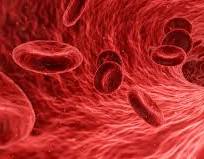myocardial infarction
myocardial infarction (MI)
Myocardial infarction (MI), also known as myocardial infarction or heart attack, commonly referred to as a heart attack, is a damage to the myocardium caused by a decrease or cessation of coronary blood flow; Due to its acute and severe nature, it is often referred to as acute myocardial infarction (AMI) or acute heart attack. Most myocardial infarctions are caused by coronary artery disease. Risk factors include hypertension, smoking, diabetes, lack of exercise, obesity, hypercholesterolemia, malnutrition, excessive alcohol intake, etc. The underlying cause of myocardial infarction is often coronary artery occlusion caused by the rupture of atherosclerotic plaque.
The common symptom is chest pain or discomfort behind the sternum, which usually radiates to the left shoulder, arm, or chin. The pain may sometimes feel like heartburn. Other symptoms may include shortness of breath, nausea and vomiting, fainting, cold sweats, fatigue, weakness, and decreased consciousness. Sometimes, myocardial infarction can also lead to coma. The most common type is when the previously stable angina becomes unstable, or when there was no previous angina and a prolonged period of angina suddenly occurs. Typical symptoms of myocardial infarction include sudden, intense, and persistent compression pain behind the sternum, which cannot be relieved by rest or nitroglycerin. It is often accompanied by restlessness, sweating, fear, or a sense of impending death; A small number of patients have no pain and initially present with shock or acute heart failure; Some patients experience pain in the upper abdomen, and some feel a stone pressing against their heart.
A case of true Myocardial infarction (MI) cured: Patient H is a healthy person, without hypertension, smoking, diabetes, lack of exercise, obesity, hypercholesterolemia, malnutrition, excessive alcohol intake, etc. Patient H is injured, resulting in coronary artery occlusion caused by the rupture of atherosclerotic plaque, and then suffered from myocardial infarction. Patient H has taken aspirin, nitroglycerin, opioids, and other medications. When the first myocardial infarct occurs, the symptoms include shortness of breath, nausea and vomiting, fainting, cold sweat, weakness, etc. The pain is not strong and quickly subsides. Then start taking medication. When the second myocardial infarct occurs, the symptoms include pain in the left chest, shortness of breath, nausea and vomiting, fainting, cold sweat, and squeezing pain (at this time, it is absolutely impossible to take medication with the mouth closed, and need to open your mouth and breathe deeply), feeling pressed by a palm sized cold stone in your heart. This time it’s less than 5 minutes. When the third myocardial infarct occurs, the symptoms are a squeezing pain in the chest, which spreads from the front of the chest to the back of the chest and various parts of the body. The throat tightens, breathing becomes difficult, nausea and vomiting occur, cold sweat spreads throughout the body, fainting, fear, and a decrease in consciousness. Patient H wanted to lie down, but couldn’t; felt a cool stone the size of a palm pressing on his heart; Patient H feels a sense of impending death and jumps to relieve it; It’s no use, patient H is almost suffocating. The pain was unbearable, but fortunately it finally stopped, probably for over 5 minutes.
